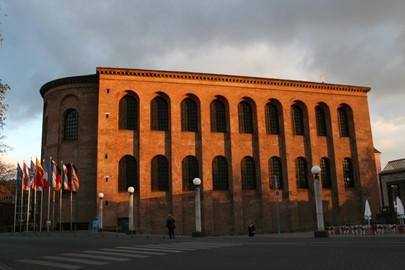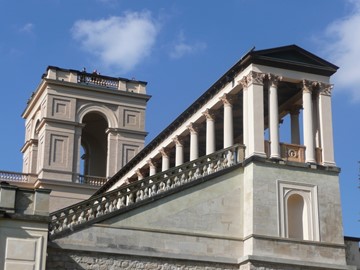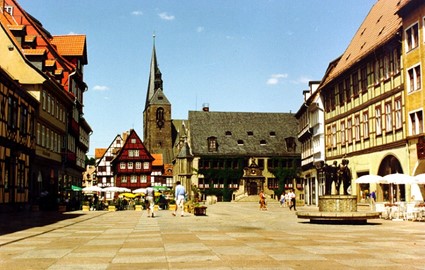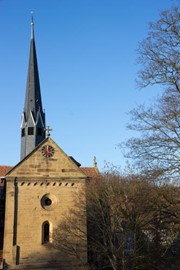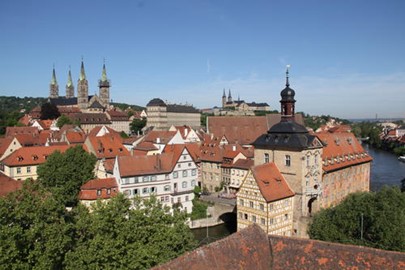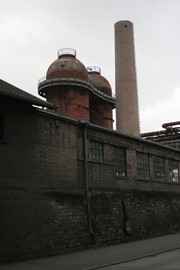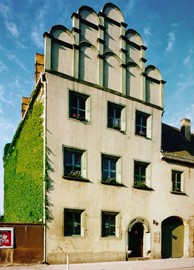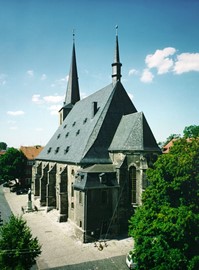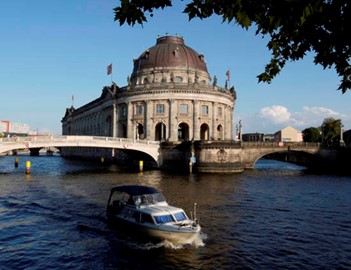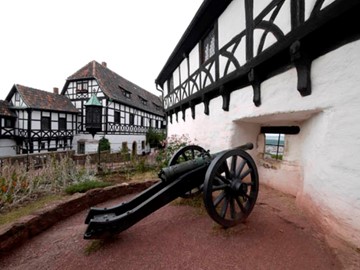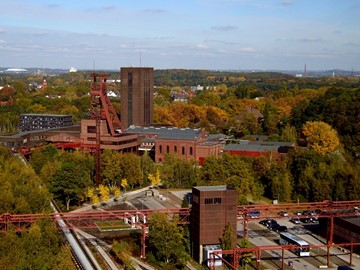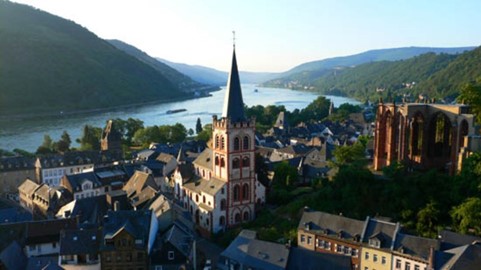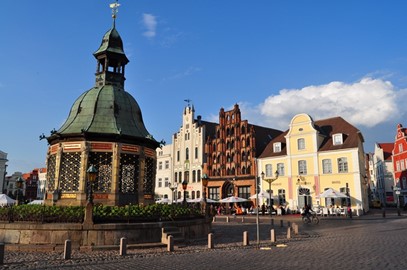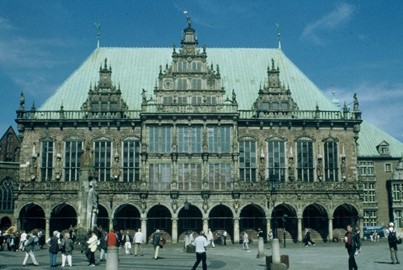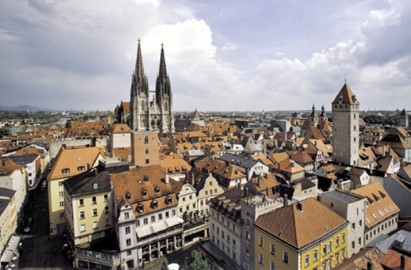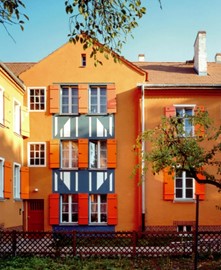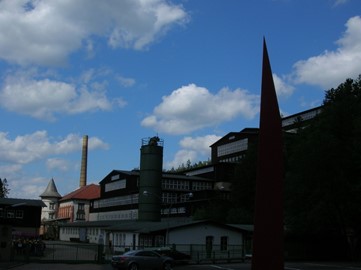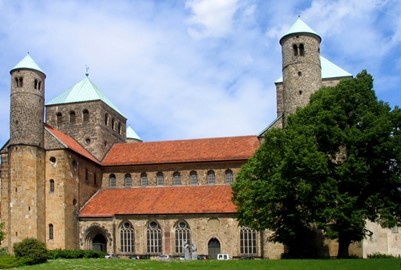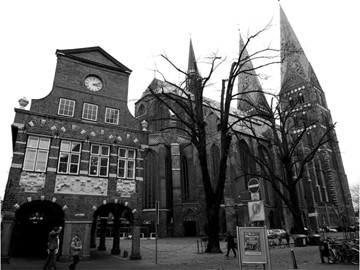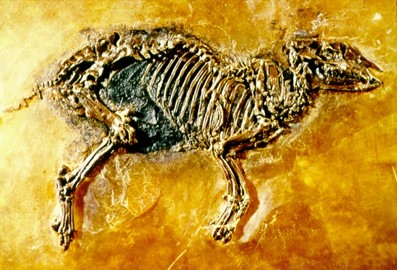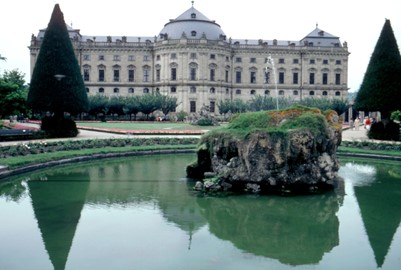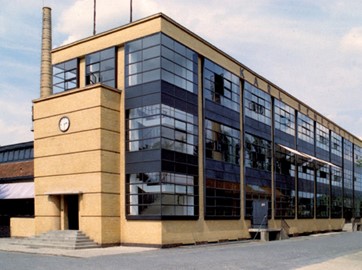region :: europe and north america
Trier
Trier, a UNESCO World Heritage site in Germany, is one of the oldest cities in the country, founded by the Romans in the 1st century BCE. It boasts an impressive collection of Roman monuments, including the Porta Nigra gate, an amphitheater, and the grand Constantine Basilica. The city also features well-preserved Roman baths and a bridge spanning the river, showcasing ancient engineering. Beyond its Roman legacy, Trier includes medieval and Baroque architecture, reflecting its long history. This site offer... Read More
Potsdam
The Palaces and Parks of Potsdam and Berlin, a UNESCO World Heritage site in Germany, form a magnificent ensemble of Prussian architecture and landscaped gardens from the 18th and 19th centuries. Highlights include the opulent Sanssouci Palace and its terraced gardens, reflecting royal elegance. This vast complex showcases a blend of Baroque, Rococo, and Neoclassical styles, designed for monarchs like Frederick the Great. The sprawling parks, dotted with pavilions and fountains, exemplify meticulous plannin... Read More
Garden Kingdom of Dessau Wörlitz
The Garden Kingdom of Dessau-Wörlitz, a UNESCO World Heritage site in Germany, is an 18th-century landscape masterpiece blending nature and architecture. Designed as an Enlightenment-era retreat, it features elegant palaces, serene lakes, and meticulously planned gardens. This pioneering park reflects innovative landscaping ideas of its time. Its picturesque vistas and neoclassical structures draw visitors into a harmonious vision. The site offers a glimpse into aristocratic leisure and aesthetic ideals. It... Read More
Quedlinburg
Quedlinburg, a UNESCO World Heritage site in Germany, is a medieval town renowned for its well-preserved half-timbered houses and cobblestone streets. Dating back over 1,000 years, it features a Romanesque castle hill and collegiate church, reflecting its historical significance as an early German settlement. The town’s charming architecture showcases a blend of Gothic and Renaissance styles. Once a key center in the Holy Roman Empire, it preserves a rich cultural legacy. This site offers a captivating glim... Read More
Maulbronn Monastery
Maulbronn Monastery, a UNESCO World Heritage site in Germany, is a remarkably preserved medieval Cistercian complex founded in 1147. Its Romanesque and Gothic architecture includes a grand church, cloisters, and monastic buildings, showcasing monastic life’s simplicity and ingenuity. Surrounded by fortified walls, it reflects centuries of religious and cultural history. The site features an innovative water management system, highlighting medieval engineering. This tranquil complex offers a vivid glimpse in... Read More
Bamberg
Bamberg, a UNESCO World Heritage site in Germany, is a medieval town renowned for its well-preserved historic center. Built on seven hills, it features a striking cathedral, half-timbered houses, and a unique old town hall perched over a river. The town reflects a blend of Romanesque and Baroque architecture from the 11th to 18th centuries. Known for its brewing heritage, it exudes a timeless charm. This site offers a captivating glimpse into Germany’s cultural and architectural past.
Volklingen Ironworks
The Völklingen Ironworks, a UNESCO World Heritage site in Germany, is a vast industrial complex from the 19th and 20th centuries, once a leading iron production site. Preserved in its entirety, it features towering blast furnaces, machinery, and workers’ facilities, showcasing the Industrial Revolution’s scale. This site offers a striking look at technological heritage and labor history. Its rusted structures stand as a monument to a bygone era of heavy industry. Today, it serves as a cultural venue, blendi... Read More
Luther Memorials
The Luther Memorials, a UNESCO World Heritage site in Germany, honor Martin Luther’s pivotal role in the Protestant Reformation. These sites include historic buildings like the house where Luther lived and the church where he nailed his 95 Theses. Preserved from the 16th century, they reflect the era’s religious and cultural shifts. The architecture ranges from simple homes to grand Gothic structures, showcasing period design. This collection offers a tangible link to a transformative moment in European his... Read More
Classical Weimar
Classical Weimar, a UNESCO World Heritage site in Germany, is a historic town that flourished as a cultural hub in the 18th and 19th centuries. Known for its association with luminaries like Goethe and Schiller, it features elegant homes, theaters, and parks reflecting Enlightenment ideals. The town’s well-preserved architecture blends Baroque and neoclassical styles, showcasing its intellectual legacy. This site offers a glimpse into a pivotal era of European thought and creativity. Its serene charm and hi... Read More
Museumsinsel
Museumsinsel, a UNESCO World Heritage site in Germany, is a unique island complex housing five world-class museums built between the 19th and early 20th centuries. Renowned for its neoclassical architecture, it showcases an extraordinary collection of art and artifacts spanning human history. The site reflects Germany’s commitment to cultural preservation and enlightenment ideals. Each museum, from ancient treasures to European masterpieces, offers a distinct narrative of civilization. This harmonious ensem... Read More
Wartburg Castle
Wartburg Castle, a UNESCO World Heritage site in Germany, is a medieval fortress perched atop a hill, dating back to the 11th century. Known for its role in sheltering Martin Luther during the Reformation, it blends Romanesque and Gothic architecture. The castle’s grand halls and towers reflect its historical significance as a cultural and political hub. Its well-preserved state offers a glimpse into feudal life and German heritage. This iconic site symbolizes both spiritual legacy and architectural prowess... Read More
Reichenau
Reichenau, a UNESCO World Heritage site in Germany, is an island renowned for its medieval monastic heritage from the 8th to 11th centuries. It features three well-preserved churches showcasing early Romanesque architecture and vibrant frescoes. Founded by St. Pirmin, the monastery became a key center of learning and manuscript production. Set in a serene lake landscape, it reflects the Carolingian era’s cultural and spiritual influence. This site offers a glimpse into Europe’s early medieval history. Its p... Read More
Zollverein
Zollverein Coal Mine, a UNESCO World Heritage site in Germany, is a striking industrial complex from the early 20th century, once a powerhouse of coal mining and steel production. Designed in the Bauhaus style, its towering shafts and vast halls blend functionality with modernist aesthetics. Built in the 1930s, it symbolizes the peak of the Industrial Revolution in Europe. The site includes a coking plant and workers’ settlements, reflecting the era’s social and economic life. Today, repurposed as a cultura... Read More
Upper Middle Rhine Valley
The Upper Middle Rhine Valley, a UNESCO World Heritage site in Germany, is a picturesque stretch of river landscape famed for its dramatic beauty and historical significance. Steep vineyard-covered slopes rise above the Rhine, dotted with medieval castles and charming villages. This romantic valley has inspired poets, artists, and composers for centuries. Its strategic location shaped trade and culture in Central Europe. The site blends natural splendor with a rich tapestry of human heritage. It stands as a... Read More
Stralsund and Wismar
Stralsund and Wismar, a UNESCO World Heritage site in Germany, are medieval Hanseatic towns renowned for their well-preserved Gothic brick architecture. Featuring grand churches, gabled houses, and historic marketplaces, they reflect the prosperity of the Hanseatic League’s trading network. These coastal settlements showcase a blend of maritime heritage and urban planning from the 13th and 14th centuries. Their robust fortifications and warehouses highlight their strategic importance in Northern Europe. Thi... Read More
Town Hall and Roland, Bremen
The Town Hall and Roland, a UNESCO World Heritage site in Germany, is a historic ensemble showcasing Bremen’s medieval and Renaissance heritage. The Town Hall, built in the 15th century, features ornate gables and a grand facade, reflecting civic pride and architectural mastery. Nearby stands the Roland statue, a 1404 symbol of independence and justice, towering over the market square. Together, they represent Bremen’s role as a key Hanseatic trading city. This site offers a striking glimpse into Germany’s ... Read More
Regensburg
Old town of Regensburg, a UNESCO World Heritage site in Germany, is a well-preserved medieval city renowned for its historical significance and architectural treasures. Founded by the Romans in 179 AD as a military camp, it evolved into a thriving trade center by the Middle Ages, boasting over 1,500 listed buildings, including the Gothic St. Peter’s Cathedral and the 12th-century Stone Bridge. Its old town, with narrow cobblestone streets and colorful facades, reflects a rich cultural heritage spanning near... Read More
Berlin Modernism Housing Estates
The Berlin Modernism Housing Estates, a UNESCO World Heritage site in Germany, comprise six residential complexes built between 1913 and 1934, showcasing innovative urban planning and architecture from the early 20th century. Designed by prominent architects like Bruno Taut and Martin Wagner, these estates reflect the Weimar Republic’s efforts to address housing shortages with functional, affordable, and aesthetically bold designs. Featuring flat roofs, colorful facades, and communal green spaces, they exem... Read More
Rammelsberg and Goslar
The Mines of Rammelsberg, Historic Town of Goslar, and Upper Harz Water Management System form a UNESCO World Heritage site showcasing a remarkable blend of industrial and cultural history. The mines, operational for over 1,000 years, highlight medieval mining technology, while the well-preserved historic town reflects its prosperity from the industry. The innovative water management system, with its intricate network of ponds and channels, powered the mines and stands as a testament to early engineering in... Read More
Hildesheim Cathedral and St Michael's Church
Hildesheim Cathedral and St. Michael’s Church, a UNESCO World Heritage site in Germany, represent outstanding examples of early Romanesque architecture. The cathedral, dedicated to St. Mary, features the famous bronze Bernward Doors and a 1,000-year-old rose bush, symbolizing resilience. St. Michael’s Church, built under Bishop Bernward’s patronage, showcases intricate design and a unique painted ceiling depicting the Tree of Jesse. Together, these landmarks highlight medieval artistry and religious signifi... Read More
Cologne Cathedral
Cologne Cathedral, a UNESCO World Heritage site in Germany, is a stunning Gothic masterpiece begun in 1248 and completed in 1880. Its iconic twin spires, intricate stained glass, and ornate architecture draw millions of visitors annually. Housing the Shrine of the Three Kings, it’s a significant Catholic pilgrimage site. The cathedral also showcases remarkable resilience, having survived World War II bombings. Today, it stands as a symbol of cultural and historical enduring legacy.
Lubeck
The Hanseatic City of Lübeck, a UNESCO World Heritage site in Germany, is renowned for its well-preserved medieval architecture and historical significance as a key trading hub of the Hanseatic League. Founded in the 12th century, it boasts landmarks like the iconic Holstentor gate, the stunning Lübeck Cathedral, and the charming old town with its brick Gothic buildings. Its cultural and architectural legacy reflects its past prominence as a center of maritime commerce in Northern Europe. Today, Lübeck rema... Read More
Messel Pit
The Messel Pit, a UNESCO World Heritage site in Germany, is a former shale quarry renowned for its exceptionally well-preserved fossils from the Eocene epoch, about 48 million years ago. Discovered in the 19th century, it offers a unique window into prehistoric life, showcasing detailed remains of mammals, birds, reptiles, and plants, including some of the earliest ancestors of modern species. Its scientific significance lies in the extraordinary preservation of soft tissues and even stomach contents, provi... Read More
Würzburg Residence
This magnificent Baroque palace – one of the largest and most beautiful in Germany and surrounded by wonderful gardens – was created under the patronage of the prince-bishops Lothar Franz and Friedrich Carl von Schönborn. It was built and decorated in the 18th century by an international team of architects, painters (including Tiepolo), sculptors and stucco-workers, led by Balthasar Neumann.
Fagus Factory
The Fagus Factory, a UNESCO World Heritage site in Germany, is an iconic early modernist building designed by architect Walter Gropius in 1911. Constructed primarily of glass, steel, and brick, it served as a shoe factory and revolutionized industrial architecture with its innovative use of large windows and open interior spaces. The structure reflects the Bauhaus movement’s emphasis on functionality, simplicity, and the integration of art and industry. Today, it stands as a testament to architectural progr... Read More
